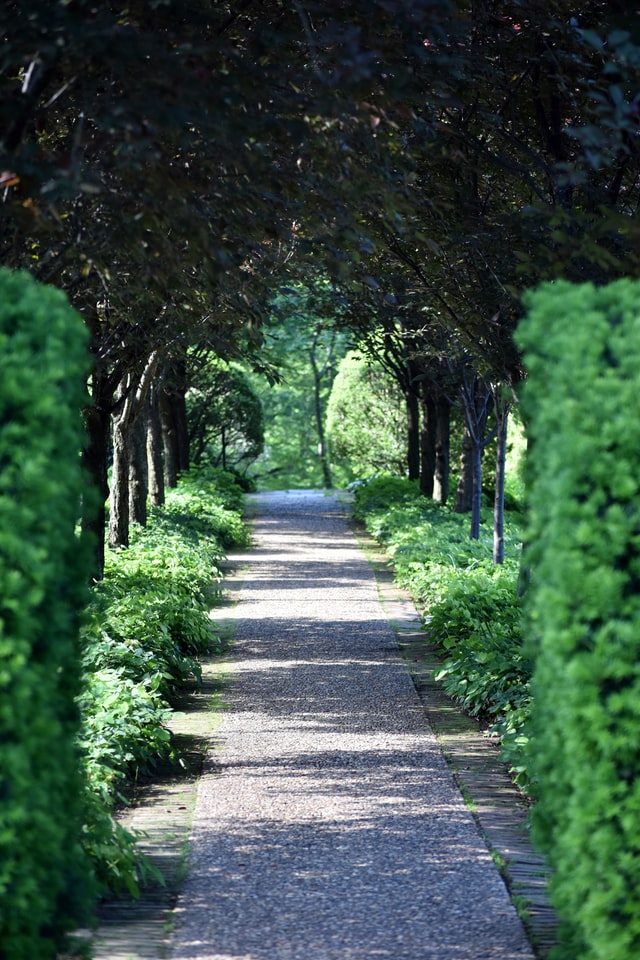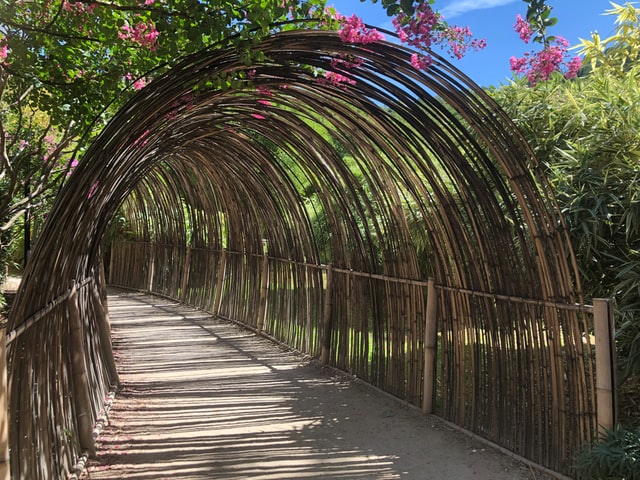This snippet has been taken from a book namely “The mix – designed mix garden”. The Factors affecting Garden colors are location, boundaries, soil, planting design and sunlight. “Tree Removal Berkeley CA“, educates you on the essentiality of these factors.
Factors affecting color
Color is never viewed in isolation. Many elements- light, associations among colors, textures, and forms; time of day; the distance from which it is viewed- after the way colors appear in the garden. If we understand the effects of these variables, we will be able to design the garden in an appropriate way, one that emphasizes the true color of the plants.
Light
Only sometimes can we see the actual color of a subject; we will perceive it differently in various lights- skylight, sunlight, reflected light. We have already briefly discussed how much light alters the apparent value and intensity of colors. The cast of daylight at different times of the day, with changing weather, at different seasons, also impacts the color of plants. Leonardo Da Vinci, as quoted in Goethe’s Theory of Colours (1840), was clearly aware of the effect: “ All illumined objects partake of the colour of the light they receive.” This color will change in the course of a day. Predawn light, for instance, usually has a bluer cast; with the sun, it can warm to reddish or pinkish, then orange, then yellow, and finally to white, normally with still a tinge of yellow. Skylight is a bluish light. Early evening light can appear golden, perhaps with some reddish tones as well. At dusk, colors move to blue or violet and eventual blackness.
Because of this variation in the color of light, colors may be more or less visible at different times during the day. In average daylight, red, tallow, and orange will be most apparent, followed by green, then blue and purple. In the blue- violet light of dusk, red darkens, while the color of blue flowers or bluish foliage may appear heightened. This phenomenon explains why blue balloon flowers seem to glow in the evening as the light dims into deep dusk.

In sunny situations or climates, vividly colored flowers and foliage shine, while pastel colors appear washed out. Pastels come into their own on overcast days or in cloudier regions. It is worth nothing that many pastel- colored flowers are naturally more adapted to shady sites ( which suits their true color), while most richer-colored flowers requires sunny sites for best growth. Whites, pastels, and yellows, because of their higher value, are more brilliant in the shade than are deeper colors. Colors of flowers and foliage in direct sunlight are tinged yellow; in indirect or diffused sunlight they are their truest colors; in shade, the reflected light of the sky turns them toward blue. Light can also be reflected from leaves, flowers, buildings, water, and hard-scaping – all alter the apparent colors of plants. Some of these elements themselves, such as leaves, change colors with the seasons, further changing our view.
The direction and angle of light changes through the day and the seasons create mystery, shadow, and intrigue and alter value and apparent depth. In early morning or late afternoon, or during the winter months, when the sun is low in the sky and weaker, contrast is reduced. This light, often known as side-lighting, emphasizes depth and the three-dimensional nature of gardens. Back-lighting causes translucent objects almost to glow, while front-lighting makes objects appear more flat and imparts a more two-dimensional feel. As designers we can capitalize on different lighting by strategically placing certain plants to take advantage of these conditions.
Distance
Distance also affects how colors are viewed. Distant colors in the garden normally appear cooler, more neutral, or faded. A phenomenon known as visual mixing can also occur when we view colors from a distance. Nineteenth-century French Impressionists, particularly the Pointillist painters, understood and used this principle. Thousands of individual dots or points of pure pigment were put on the canvas so that, when viewed from a distance, they would mix to create different tones. In the garden, if numerous
Color Interactions
Interactions among colors can be used to enhance an intended effect. One phenomenon, simultaneous contrast, is responsible for heightened contrast in hue, value, and intensity. Simultaneous contrast occurs immediately when two colors are placed side by side and each color is tinged or hazed with the neighboring color’s complement. We can brighten the intensity of a color on the color wheel. For example, if we place orange flowers next to blue flowers, the orange will be intensified by an orange haze ( blue’s complement), thus making it even more opposite the blue, which itself is intensified by a blue haze( orange’s complement). We can use this principle in designing limited-palette borders or combinations: in a yellow border, including some small areas of violet flowers (opposite yellow areas on the color wheel) can create dramatic relief and brighter focal areas that are more stunning than a sea of yellow alone. In the same way, the effect of green foliage in a red garden is a ready-made brightening contrast.

Simultaneous contrast can also have the effect of driving colors further apart. For example, if orange is placed directly next to yellow, the orange will appear more reddish (due to the violet haze) and the yellow more greenish (due to the blue haze). Simultaneous contrast can be tricky and makes creating certain color schemes, particularly monochromatic ones, more challenging. For example, a flower that may appear red when isolated from other red flowers suddenly may look too pink, plain wrong truer reds. This is the time when a spade becomes the weapon of choice for the colorist, and the offending plant is moved to a new location.
Successive contrast is similar to simultaneous contrast but involves the element of time: have you ever noticed that, having stared at a color for 15 to 30 seconds , you have the tendency to see a ghost or afterimage of that color’s complement when you then look at a third color, particularly white? In creating color transitions through the border, or from one color garden to another, the designer can make effective use of this phenomenon. Gertrude Jekyll (1908), a master at orchestrating colors, writes ( while describing a chain of five variously colored gardens) that the gray garden, which also contained blue flowers, “is seen at its best by reaching it through the orange borders (because) the strong, rich coloring has the natural effect of making the eye eagerly desirous for the complementary colour…. One never knew before how vividly bright Ageratum could be, or lavender or Nepeta.”
Other color associations have different types of impact. Surrounding a color with neutrals, such as grays or browns, or with less saturated colors, is another way to dramatize a color. For example, a purple garden is enlivened with splashes of gray foliage. A color’s brightness can be decreased by surrounding it with analogous colors (those adjacent on the color wheel); it can be decreased by surrounding it with more highly saturated colors. The value of a flower color can be lightened by placing the flowers against a darker background or with darker foliage; conversely, we can darken a color’s value by placing it next to a lighter background.
On this note, consider too how the colors of nearby hard-scaping, such as a wall or pavement, and elements like pots or benches affect the appearance of colors in a planting. For example, the yellow spires of Ligularia ‘ The Rocket’ will look dramatic against a wall painted black or dark blue, whereas these flowers will look more subdued next to a beige house.
Continue reading the article on Shrubs
